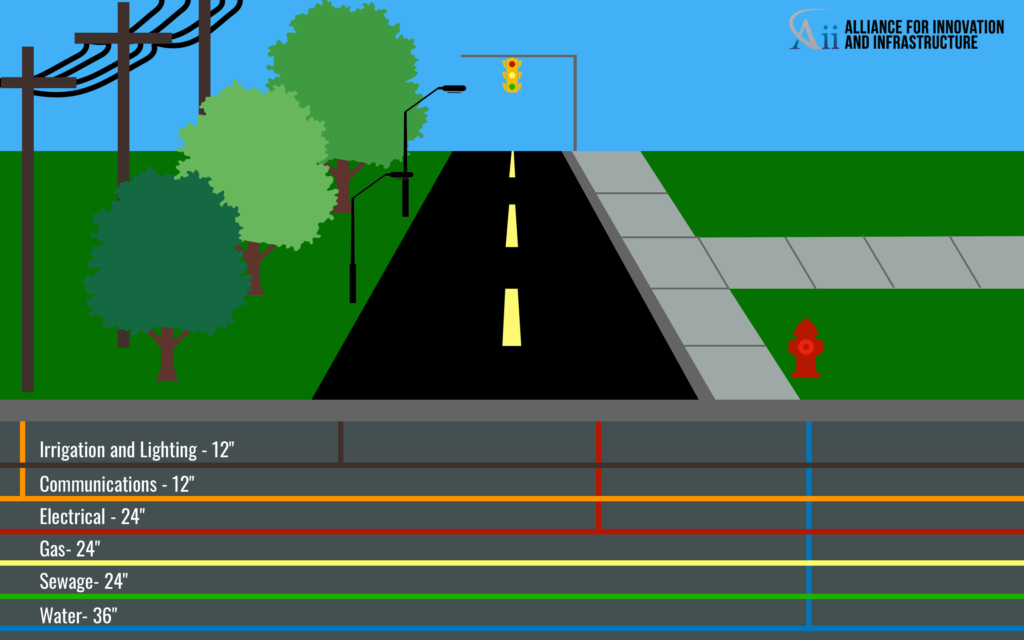In any natural landscape, a wide variety of vegetation have different root networks belowground. The same is true for the Modern Roots that deliver water, Internet, and much more to all different types of structures. The utilities that run beneath our feet are buried at different depths depending on a variety of factors. Whether installing a fence or building an addition to a house, knowing which utilities have industry standards on underground depth is crucial to avoiding accidents. Calling 811 before commencing a dig is the safest way to find out how deep utilities lie beneath the ground.

For some utilities, national standards are set for the safest depth at which to bury them. Other utilities can be buried at any depth, as long as the ground does not freeze or impact the utility in any way. Utility depths are also affected by grade changes that may alter the depth of multiple utilities. Water and electrical lines have 36-inch and 18-inch minimum standards nationwide and gas lines must be at a minimum depth of 24 inches. Phone and cable lights can be buried at shallower depths of 12 inches, while Ethernet cables that deliver Internet to a structure can be buried six to ten inches below ground.
Overall, sewage, water, and gas lines are usually the utilities that are buried deepest due to their essential functions and potential danger if ruptured. Households can also have surface level or one to three-inch deep irrigation networks or landscape lights that can be a barrier to potential digs. Homeowners’ knowledge of their own surface-level networks can be an asset to 811, as more information given to One-Call centers will further reduce the chances of damage.
Regardless of the size or depth of your digging project, calling 811 can save time and money. Knowing and locating the Modern Roots below your home or business will prevent an upgrade or addition to a structure from turning into a costly repair job.
Learn more about Aii’s #ModernRootsMarch by visiting its webpage here.
Written by Roy Mathews, Public Policy Associate
The Alliance for Innovation and Infrastructure (Aii) is an independent, national research and educational organization. An innovative think tank, Aii explores the intersection of economics, law, and public policy in the areas of climate, damage prevention, energy, infrastructure, innovation, technology, and transportation.